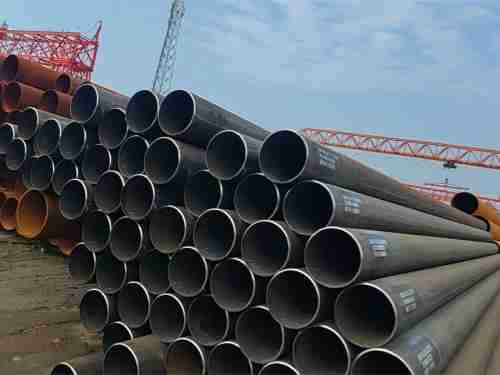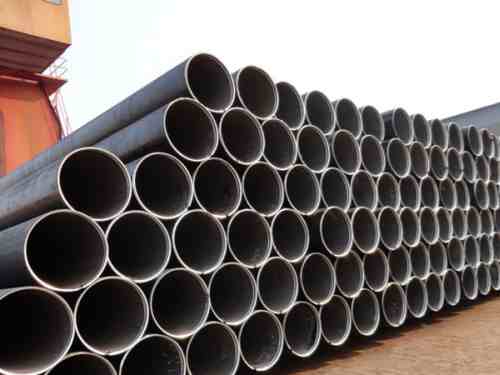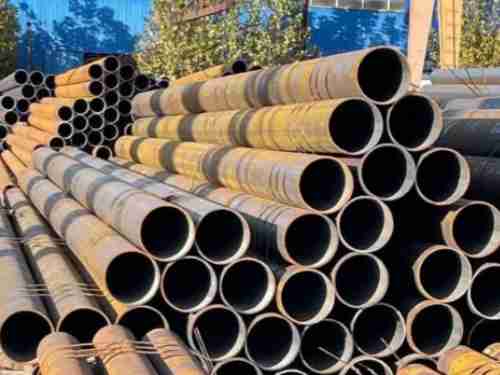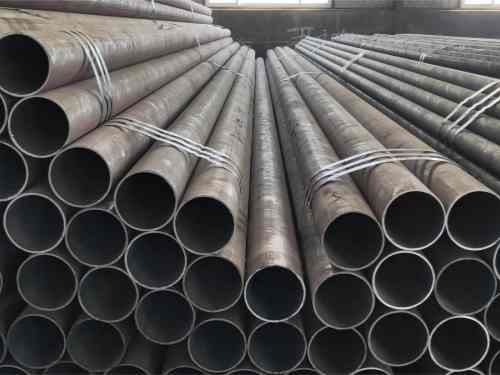Carbon steel (CS) seamless pipes are widely used for their high strength and stable mechanical properties, making them essential in industries such as petrochemicals, construction, aerospace, and manufacturing. To enhance their performance and quality, annealing is a crucial heat treatment process. This process involves gradually heating the material to a specific temperature and then controlled cooling to refine the crystal structure and optimize mechanical properties.
The effectiveness of annealing depends on several key factors, including temperature, holding time, cooling method, furnace atmosphere, and loading technique. Below is a detailed analysis of the optimal annealing conditions for carbon steel seamless pipes.
- Temperature Conditions
(1) Full Annealing
Process: The steel is heated 30–50°C above the critical temperature (Ac3) to ensure complete recrystallization.
Temperature Range:
For carbon steel with 0.3%–0.6% carbon, Ac3 is approximately 750–800°C, so full annealing is conducted at 800–850°C.
Purpose:
Eliminates structural defects.
Refines the grain structure.
Reduces hardness for improved machinability.
(2) Incomplete Annealing
Process: Heating the steel to a temperature between Ac1 and Ac3.
Temperature Range:
For hypoeutectoid carbon steel, Ac1 is around 727°C, so incomplete annealing is conducted at 740–770°C.
Purpose:
Softens the material while retaining strength and toughness.
Optimizes the internal structure for subsequent processing.
(3) Spheroidizing Annealing
Process: Applied to eutectoid and hypereutectoid carbon steels, where the goal is to transform cementite into spheroidal shapes.
Temperature Range:
Set at 20–30°C above Ac1 (e.g., for T10 steel (1.0% carbon), Ac1 ≈ 730°C, so annealing is conducted at 750–760°C).
Purpose:
Reduces hardness for easier machining.
Prepares the material for further heat treatment (e.g., quenching).
- Holding Time
The holding time ensures that the microstructure transformation is uniform across the material. It varies based on:
Material composition
Wall thickness
Processing requirements
General Holding Time Guidelines:
Typically 2–4 hours to allow complete structural transformation and ensure uniform grain refinement.
- Cooling Methods
Proper cooling is critical to achieving desired mechanical properties and minimizing internal stress.
(1) Cooling After Full Annealing
Cooling Rate: Slow cooling is required to prevent internal stress.
Process:
The pipe is cooled in the furnace to 500–600°C, then air-cooled.
Effect:
Facilitates complete decomposition of austenite into ferrite and pearlite.
Minimizes residual stress and improves mechanical stability.
(2) Cooling After Incomplete Annealing
Cooling Rate: Moderate cooling to maintain structural integrity.
Process:
Furnace cooling or sand cooling is used.
The cooling rate is controlled at 30–50°C per hour.
Effect:
Ensures even microstructure transformation.
Reduces internal stress for stable material properties.
(3) Cooling After Spheroidizing Annealing
Cooling Rate: Highly controlled cooling to retain the spheroidal structure.
Process:
The temperature is reduced at a rate of 10–20°C per hour until it reaches 500–600°C, then air-cooled.
Effect:
Maintains spheroidized cementite, improving machinability.
- Furnace Atmosphere Control
The furnace atmosphere plays a key role in preventing surface defects during annealing.
Neutral or slightly oxidizing atmospheres are preferred to prevent decarburization.
Gas furnaces require precise control of gas-to-air ratio to:
Avoid excessive oxidation, which can cause scale formation.
Prevent decarburization, which weakens the material's surface quality.
- Furnace Loading Method
Proper loading arrangement in the furnace ensures uniform heating and cooling.
Best Practices for Furnace Loading:
Pipes should be evenly spaced to avoid uneven temperature distribution.
Avoid excessive stacking, which can cause uneven heating.
Layered or interval-based loading allows for better heat penetration.
Conclusion
Selecting the optimal annealing conditions is crucial for ensuring the mechanical performance, structural integrity, and processing efficiency of carbon steel seamless pipes.
Temperature, holding time, and cooling methods must be carefully controlled based on material type and application requirements.
Furnace atmosphere should be optimized to prevent decarburization and oxidation.
Proper furnace loading ensures uniform heat treatment for consistent product quality.
By fine-tuning these parameters, manufacturers can enhance the quality, durability, and machinability of carbon steel seamless pipes, meeting industry demands for high-performance materials.

 English
English Español
Español











